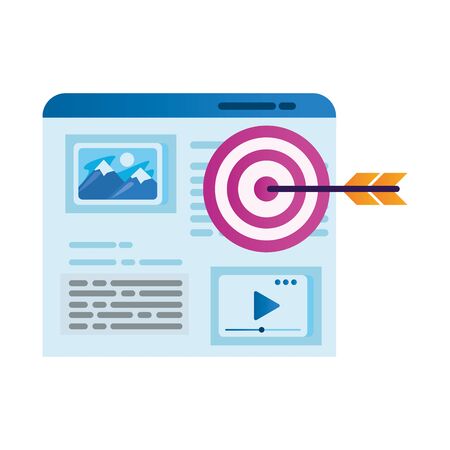Understanding Bounce Rates and Their Impact on SEO
When it comes to improving your websites visibility on search engines like Google, understanding bounce rates is a great place to start. Bounce rate is a metric that shows the percentage of visitors who land on a page and leave without clicking through to another page on the same site. In other words, they “bounce” away after viewing just one page.
What Exactly Is a Bounce Rate?
A bounce happens when someone visits a single page on your website and then exits without taking any further action—no clicks, no form submissions, no navigating to other pages. This can be an indicator that the content didn’t meet their expectations or wasn’t engaging enough to keep them exploring.
Common Reasons for High Bounce Rates
- Slow page load times
- Poor mobile experience
- Confusing navigation
- Lack of relevant content
- Intrusive pop-ups or ads
How Bounce Rates Affect Your SEO Rankings
Search engines aim to deliver the most relevant and helpful results to users. When your site has a high bounce rate, it may signal to Google that your content isn’t satisfying user intent. This can lead to lower rankings in search engine results pages (SERPs).
SEO Signals Related to Bounce Rate
| User Behavior Signal | Impact on SEO |
|---|---|
| High Bounce Rate | May indicate poor content relevance or weak UX; can hurt rankings over time |
| Low Time on Page | Suggests users aren’t engaging; might reduce ranking potential |
| No Internal Clicks | Tells search engines that users arent exploring more; seen as low value |
Why Reducing Bounce Rates Is Critical for SEO Success
The lower your bounce rate, the more likely it is that users are finding what they need—and staying longer on your site. This sends positive signals to search engines about the quality and relevance of your content. Plus, keeping visitors engaged increases the chance they’ll convert into customers, subscribers, or leads.
Benefits of Lowering Your Bounce Rate
- Improved search engine rankings
- Higher user engagement and satisfaction
- Increased conversions and goal completions
- Better overall user experience (UX)
Understanding how bounce rates work and how they influence SEO is the first step toward creating a site that not only ranks well but also keeps users coming back for more.
2. The Role of User Experience in Reducing Bounce Rates
When it comes to SEO, user experience (UX) is more important than ever. A well-designed website doesn’t just look good — it helps keep visitors on your site longer, reducing bounce rates and signaling to search engines that your content is valuable. Let’s break down the key UX elements that can make a big difference.
Intuitive Website Design Keeps Visitors Moving
If users land on your page and feel confused about what to do next, they’re likely to leave right away. That’s a bounce. But when a site is easy to navigate and visually clear, people naturally want to explore more. Clear menus, logical page structure, and simple calls-to-action guide users through your site without frustration.
Tips for More Intuitive Design:
- Use consistent navigation across all pages
- Keep content organized with headings and bullet points
- Highlight the most important info above the fold
- Make buttons stand out with color and size
Fast Load Times Prevent Early Exits
No one likes waiting for a website to load. In fact, studies show that if a page takes more than three seconds to load, many users will abandon it. Speed isn’t just about convenience — it directly impacts bounce rate and SEO rankings.
Ways to Improve Load Time:
| Optimization Technique | Description |
|---|---|
| Image Compression | Reduces file size without losing quality |
| Browser Caching | Saves elements locally so repeat visits are faster |
| Minify CSS/JS | Removes unnecessary characters from code files |
| Use a CDN | Delivers content from servers closer to users |
Mobile Responsiveness Is No Longer Optional
With over half of web traffic coming from mobile devices, having a responsive design is critical. If your site doesn’t work well on smartphones or tablets, users won’t stick around — and Google will notice.
Key Features of Mobile-Friendly Sites:
- Text that’s easy to read without zooming in
- Buttons spaced far enough apart for tapping
- Layouts that adjust smoothly to different screen sizes
- No horizontal scrolling required
A strong user experience makes your website more enjoyable and trustworthy for visitors. By focusing on intuitive design, fast performance, and mobile readiness, you’ll not only reduce bounce rates but also build a stronger foundation for SEO success.

3. Crafting Engaging Content That Keeps Visitors On-Page
When it comes to reducing bounce rates, great content isn’t just about what you say—it’s about how you say it and how easy it is for users to interact with your message. A well-structured, visually appealing page can keep visitors engaged longer, which sends positive signals to search engines and improves your SEO performance.
Clear and Logical Structure
Your content should follow a logical flow that guides the reader from start to finish. Break up large blocks of text with headings and subheadings so users can easily scan for the information they need. Use bullet points or numbered lists when appropriate to make key points more digestible.
Example Structure:
| Section | Purpose |
|---|---|
| Introduction | Set expectations and draw the reader in |
| Main Content | Deliver value through useful information or storytelling |
| CTA (Call-to-Action) | Encourage further engagement or conversion |
Compelling Calls-to-Action (CTAs)
A strong CTA keeps users moving through your site instead of bouncing away. Whether its encouraging them to read a related article, sign up for a newsletter, or explore your services, CTAs should be clear, action-oriented, and relevant to the content on the page.
Tips for Effective CTAs:
- Use action verbs like “Discover,” “Start,” or “Explore”
- Make buttons stand out with contrasting colors
- Place CTAs strategically within the content—not just at the end
Multimedia Integration
Adding visual elements like images, videos, infographics, and interactive tools can significantly increase user engagement. Multimedia not only breaks up text but also caters to different learning styles, making your content more accessible and interesting.
Benefits of Using Multimedia:
| Media Type | User Engagement Benefit |
|---|---|
| Images | Add visual context and improve comprehension |
| Videos | Increase time on page and explain complex topics easily |
| Infographics | Simplify data-heavy concepts into digestible visuals |
Create for Your Audience First, Then Optimize for SEO
The best-performing content is created with the user in mind. Focus on solving their problems, answering their questions, or entertaining them—then layer in SEO best practices like keyword placement and internal linking. This balance helps reduce bounce rates while still supporting your search visibility goals.
Key Takeaway:
If visitors find your content valuable and easy to navigate, they’re more likely to stay longer, engage more deeply, and return in the future—all of which contribute to lower bounce rates and stronger SEO performance.
4. Navigation, Layout, and Internal Linking Best Practices
One of the key factors in reducing bounce rates and improving SEO is making your website easy to explore. When users can quickly find what they’re looking for—or stumble across something even better—they’re more likely to stay longer, click deeper, and engage with your content. This all starts with smart UI/UX design focused on navigation, layout, and internal linking.
Clear and Intuitive Navigation
A well-structured navigation menu helps visitors understand where they are on your site and where they can go next. Keep your menu simple, logical, and consistent across all pages. Avoid overwhelming users with too many options—stick to key categories that make sense from a user’s point of view.
Best Practices for Navigation:
| Do | Dont |
|---|---|
| Use clear labels like “About Us,” “Services,” or “Contact” | Avoid vague terms like “Stuff” or “Things We Do” |
| Keep navigation visible on all pages | Don’t hide menus behind multiple clicks |
| Limit main menu items to 5–7 choices | Don’t overload users with long dropdown lists |
User-Friendly Page Layouts
Good layout design guides visitors through your content naturally. Use whitespace effectively to reduce clutter and highlight important elements like calls-to-action (CTAs). Break up large blocks of text with headers, images, and bullet points so users can easily scan for information.
Key Layout Tips:
- Above-the-fold value: Place important content and CTAs near the top of the page.
- Consistent structure: Use the same layout style across similar page types to build familiarity.
- Visual hierarchy: Make headlines larger and bolder than subtext to show importance.
Effective Internal Linking Strategies
Internal links keep users engaged by leading them to related content within your site. This not only reduces bounce rates but also boosts SEO by helping search engines crawl your site more efficiently.
Best Practices for Internal Linking:
- Use descriptive anchor text: Instead of “click here,” use meaningful phrases like “learn more about our services.”
- Add links naturally: Incorporate internal links within your content where it makes sense contextually.
- Create topic clusters: Link related blog posts or product pages together to encourage deeper exploration.
Example of Topic Clustering:
| Main Page | Supporting Pages (Linked Internally) |
|---|---|
| SEO Optimization Guide | On-page SEO Tips, Keyword Research Basics, Technical SEO Checklist |
| User Experience Design | Navigation UX Principles, Mobile UX Best Practices, CTA Placement Strategies |
The goal is to create an environment where visitors are encouraged to continue exploring. By improving navigation clarity, simplifying layouts, and building strong internal links, you’ll keep users engaged—and search engines happy too.
5. Measuring and Testing UX Improvements with Analytics
Improving your website’s user experience (UX) is a great way to reduce bounce rates and boost your SEO performance. But how do you know if the changes you make are actually working? That’s where data and testing come in. Let’s look at how to use tools like Google Analytics, heatmaps, and A/B testing to measure the impact of your UX improvements.
Using Google Analytics to Track Bounce Rates
Google Analytics is one of the most powerful tools for understanding how users interact with your site. To see if your UX changes are helping reduce bounce rates, start by tracking key metrics before and after making updates.
Key Metrics to Monitor:
| Metric | Description |
|---|---|
| Bounce Rate | The percentage of visitors who leave after viewing only one page. |
| Average Session Duration | How long users stay on your site, which can indicate engagement levels. |
| Pages per Session | The average number of pages viewed during a session. |
| Exit Pages | Shows which pages users are leaving from—helpful for identifying problem areas. |
Heatmaps: Visualizing User Behavior
Heatmap tools like Hotjar or Crazy Egg let you visualize where users click, scroll, or get stuck. These insights help you understand what’s working on a page and what’s not, so you can adjust design elements accordingly.
Heatmap Insights You Can Use:
- Click Maps: Show which buttons or links get the most attention.
- Scroll Maps: Reveal how far down users scroll on each page.
- Move Maps: Track cursor movements to understand reading patterns.
A/B Testing for Data-Driven Decisions
A/B testing lets you compare two versions of a page to see which performs better. For example, test different CTA button placements or headline styles to see which version keeps users engaged longer and lowers bounce rates.
A Simple A/B Testing Example:
| Element Tested | Version A | Version B | Result |
|---|---|---|---|
| CTA Button Color | Blue Button | Red Button | Red Button had 15% lower bounce rate |
| Headline Text | “Welcome!” | “Get Started Today” | “Get Started Today” increased time on page by 20% |
Tie It All Together with Continuous Monitoring
The key to successful UX optimization is ongoing measurement. Don’t just make changes once and hope for the best—set up regular reporting in Google Analytics, run frequent heatmap reviews, and continue A/B testing different elements. This way, youll keep refining the user experience and reducing bounce rates over time.
By combining these analytics tools, you’ll be able to make smart, data-backed decisions that not only improve UX but also support your overall SEO strategy.


